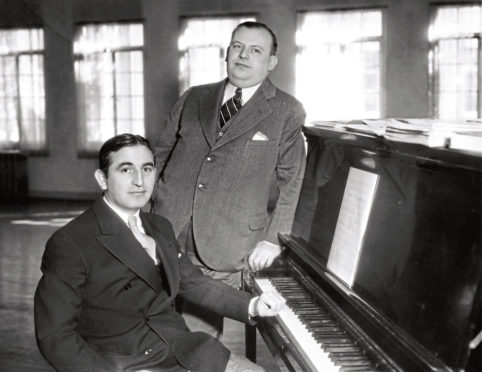Tin Pan Alley was more than just a physical place, though it was that first – a single block of buildings on Manhattan’s West 28th Street, between Sixth Avenue and Broadway.
It also came to mean a type of music (most of it simple and disposable), a cultural reference point and ultimately, perhaps, a state of mind.
The name itself seems to have described the squall that emerged from the open windows of that tight grouping of music publisher offices – cheap, ill-tuned pianos being banged like pans by songwriters who, similar to the era’s travelling Bible or insurance salesmen, were attempting to flog their wares for the best price they could get.
At its height in the early part of the 20th Century Tin Pan Alley was producing thousands of songs a year, sold in the form of sheet music to the many piano-playing families who were in the mood for something a bit spicier than old hymns and light classical pieces.
The folk image of the Tin Pan Alley songwriter is a disreputable sort, always half-soused and desperately short of cash, cutting deals for a few dollars and not much valuing their own product. There were, roughly, three levels of success – a song that became a best-selling piece of sheet music, that made its way into a Broadway musical or, best of all, ended up in a movie.
In among the dross were the pearls, a display case of talent that included the Gershwins, Irving Berlin, Hoagy Carmichael, Richard Rodgers, Oscar Hammerstein, Lorenz Hart and Cole Porter. There was nothing throwaway about their output. They produced clever, witty lyrics married with smart rhythms and swooning classical notes borrowed from composers such as Ravel and Debussy.
These were songs for the feet, the heart and the brain and are still regarded as standards today. As Ben Yagoda puts it in his book “The B Side – The Death of Tin Pan Alley and the Rebirth of the Great American Song”, “most of them have lyrics that rise to the occasion and are wedded to the melody, sophisticated… and dazzlingly inventive… even when dealing with commonplace tropes of love and longing. A standard can have a palpable honesty and conviction and can be emotionally affecting without being schmaltzy”.
It was a few months back that my friend, the musician and songwriter Bobby Bluebell (of The Bluebells and my own band Fat Cops), rang to tell me he’d had the idea of taking a variety of old songs and remaking them with modern Scottish singers, with accompanying videos. He had one in mind for me.
The song was one that we’ve both loved for a long time – “I Only Have Eyes For You”. It’s been covered often, but our favourite is an astonishing rendition from 1959 by the superior doo-wop group The Flamingos, which, with its repetitive, chiming piano, urgent “sha-bop sha-bop” backing, and constant switching from minor to major and back, leaves the listener transfixed and strangely off-centre. In 1975 Art Garfunkel’s swooping take went to number one.
It’s my way when engaging with a new subject to delve in as deeply as I can and attempt some amateur archaeology. In other words, wanting to know as much as I could about this song before I sang it, I ordered some books and took to the internet.
“Eyes” emerged from the Tin Pan Alley scene, from the pens of composer Harry Warren and lyricist Al Dubin. The first songwriter to focus on the movies, Warren won three Oscars and was a hit machine, producing classics such as That’s Amore, Jeepers Creepers and Chattanooga Choo Choo. Dubin was the stereotype, struggling with money, drink and drugs and dying from an overdose at 53.
The song was written for a largely forgotten 1934 Busby Berkeley film “Dames”, and is the best thing in it – particularly a surreal scene in which it soundtracks a spinning chorus line, all wearing face masks of the leading actress Ruby Keeler.
Our version would, I guess, be equally surreal to Warren and Dubin – music and vocals recorded separately at home during lockdown and then stitched together using modern technology.
I think and hope we’ve managed to retain the Prom Night purity of the original, that sense of young lovers swaying together, believing – wrongly – that this perfection can last forever.
It’s an ongoing project, supported by the good people at Into Creative. Along the way we’re hoping to raise money for the mental health charity Tiny Changes, set up after Frightened Rabbit singer Scott Hutchison tragically took his own life in 2018. It is, in its modest way, a Tin Pan for 2021.
The Tiny Changes project can be found online.
